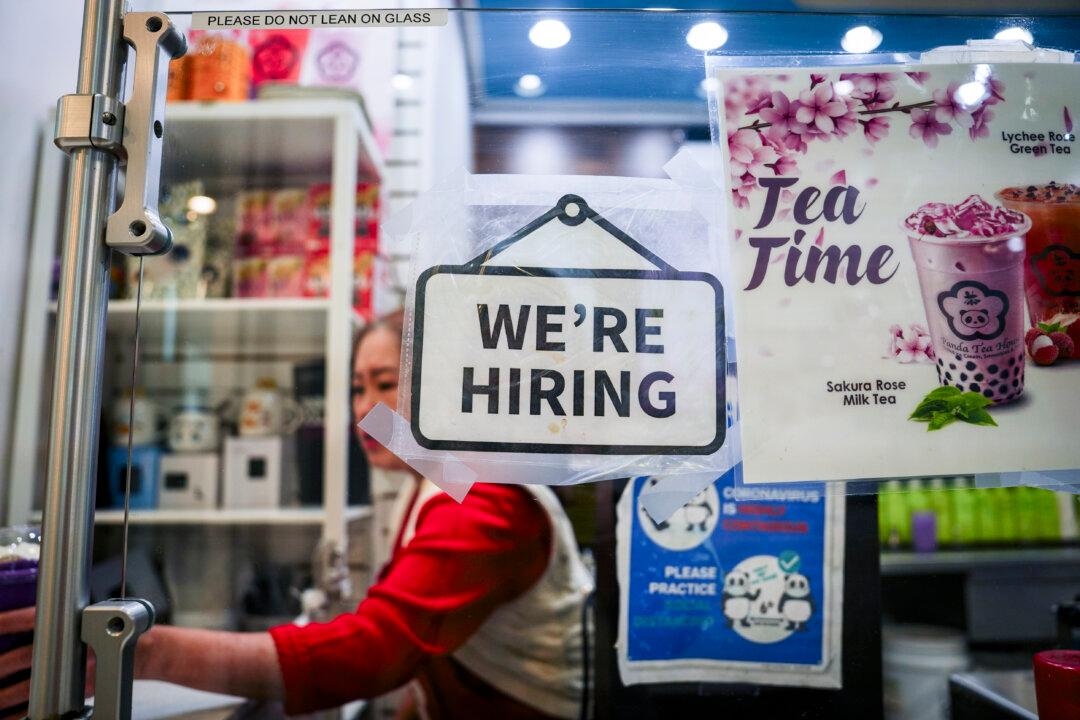Labor market conditions remained resilient in February despite economic headwinds that have blown into the United States.
The U.S. economy created 151,000 new jobs in February, up from the downwardly revised 125,000 in January, according to the Bureau of Labor Statistics.
The unemployment rate rose to 4.1 percent, slightly higher than the consensus forecast of 4 percent.
Health care was the top job creator in February, with payrolls growing by 52,000 workers. This was followed by financial activities (21,000), transportation and warehousing (18,000), and social assistance (11,000). Manufacturing payrolls also increased by 10,000 workers.
While some efforts of the Department of Government Efficiency (DOGE) might not appear for several months, the recent work of President Donald Trump’s task force is gradually showing results. Federal government employment declined by 10,000, although overall government employment levels increased by 11,000.
The White House touted the “impressive jobs report” and noted that employment figures under the previous administration were largely based on growth in the public sector.
“We had a pretty strong jobs report, and the jobs report was especially strong for manufacturing,” Kevin Hassett, director of the National Economic Council, told reporters. “So we created 10,000 manufacturing jobs in February, and to compare that to the Biden administration, 111,000 manufacturing jobs were destroyed last year.”
The retail sector also shed 6,000 jobs.
Nominal (non-inflation-adjusted) average hourly earnings rose by 0.3 percent, or 10 cents, to $35.93. Over the past 12 months, average hourly earnings have increased by 4 percent, up from the 3.9 percent reported in January.
The labor force participation rate dipped to 62.4 percent from 62.6 percent. Average weekly hours were unchanged at 34.1.
Last year’s gap between full-time and part-time employment persisted in February. Full-time jobs plunged by 1.22 million, and employed part-time workers surged by 610,000.
The number of people working two or more jobs jumped by 96,000 to 8.86 million.
The gap between U.S.-born and foreign-born workers narrowed in a trend that has been ongoing over the past few years.
U.S.-born workers surged by 284,000 to 130.1 million, while employed foreign-born workers decreased by 84,000 to 31.7 million.
Market Reaction
The benchmark stock averages were little changed following the release of February jobs figures.U.S. Treasury yields continued their downward trend, with the benchmark 10-year yield falling below 4.22 percent.
The U.S. Dollar Index, a measure of the U.S. dollar against a weighted basket of currencies such as the euro and Japanese yen, added to its losses. The index tumbled below 104 and will register a weekly loss of about 3.5 percent.
Investors might not be reacting much to the employment data because they do not provide enough clarity about the economy’s health, according to Byron Anderson, head of fixed income at Laffer Tengler Investments.
“We are not putting much stock in the jobs report at the moment,” Anderson said in a note emailed to The Epoch Times. “Today’s data was mixed at best, but we still have no clarity on the economy moving forward.”
As for the report’s effect on the U.S. central bank, Jamie Cox, managing partner for Harris Financial Group, said the administration’s decisions could be one way to push the Federal Reserve to cut interest rates.
A Week of Mixed Messaging
Economic observers have been worried this week as various indicators have signaled that the U.S. labor market could be grinding to a screeching halt.The Institute for Supply Management’s Manufacturing and Services Purchasing Managers’ Indexes—monthly surveys highlighting the prevailing economic direction of these sectors—showed varying employment levels in February.
Manufacturing employment contracted while services employment depicted faster growth.
Payroll processor ADP found in its February National Employment Report that the private sector created 77,000 new jobs, well below the January reading of 186,000 and the market estimate of 140,000.
Announced job cuts also rocketed in February. According to global outplacement firm Challenger, Gray & Christmas, planned layoffs surged by 245 percent from January, totaling more than 172,000. This was fueled by about one-third of federal terminations.
Still, initial jobless claims have been stable.
For the week ending on March 1, the number of Americans filing for unemployment benefits fell by 21,000 to a smaller-than-expected 221,000, according to the Department of Labor. The four-week average, which removes week-to-week volatility, was also little changed at 224,250.
In recent weeks, consumer sentiment has weakened considerably, something that market watchers fear could weigh on the labor market and the broader economy.
The Conference Board’s February Consumer Confidence Index revealed that respondents’ views of the labor market and future income levels were less optimistic.
“Pessimism about future employment prospects worsened and reached a ten-month high,” Stephanie Guichard, senior economist of global indicators at The Conference Board, wrote in the report.
Looking ahead to upcoming employment reports, Comerica Economics has estimated that DOGE-related cuts “will be a 250,000 to 500,000 cumulative headwind to employment in the six months from February, split between the public sector and private employers who provide services to the government.”







